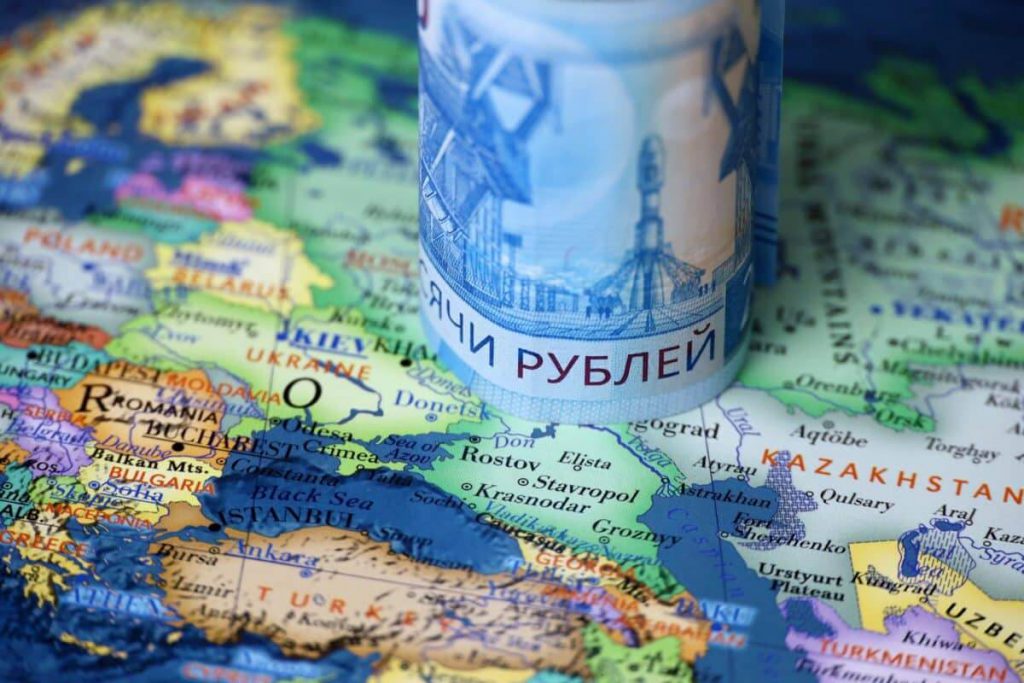
Sanctions widen disconnect between rouble and economy
Depending on the final agreement’s terms, the EU’s proposed new sanctions are likely to inflict additional damage on the Russian economy, raising Russia’s prospect of retaliation actions.
The rouble’s rebound attributes to two primary sources. First, continuous demand for the Russian currency is created by substantial foreign-currency inflows from oil and gas exports, as energy prices have risen. Second, while the Central Bank of Russia’s efforts to prevent capital flight through capital controls and higher interest rates are working, for the time being, they come at the expense of tighter financial conditions than before the sanctions due to increased credit spreads.
Imported components use in Russia’s primary non-extractive industries, including machinery and electrical equipment, computers, automobiles, and medicines. Foreign value added exceeds 50% in many sectors, with over half coming from the EU, the US, the UK, Canada, and Japan, much of which cannot be easily replaced by Chinese imports or local alternatives.
In the absence of significant economic restructuring and assuming that sanctions remain in place, Scope Ratings expects Russia’s medium-run growth potential to fall to 1-1.5 percent per year, well below that of most of Central and Eastern Europe, where living standards are much higher.
In the short term, increased energy prices may help mitigate the impact of an EU embargo on Russian oil imports.
In the long run, an EU boycott of Russian oil is likely to impose high costs on the Russian energy sector and the real economy regarding rouble convertibility, depending on the details of a final agreement.
Russia is likely to escalate economic retaliation against EU members as it seeks alternative customers for its energy in Asia. Still, a complete replacement of the European market is unlikely due to considerable transportation and logistical obstacles.
Russa’s energy infrastructure is primarily oriented westward. Due to capacity limits, immediate expansion of pipeline oil supply to China constrain.


